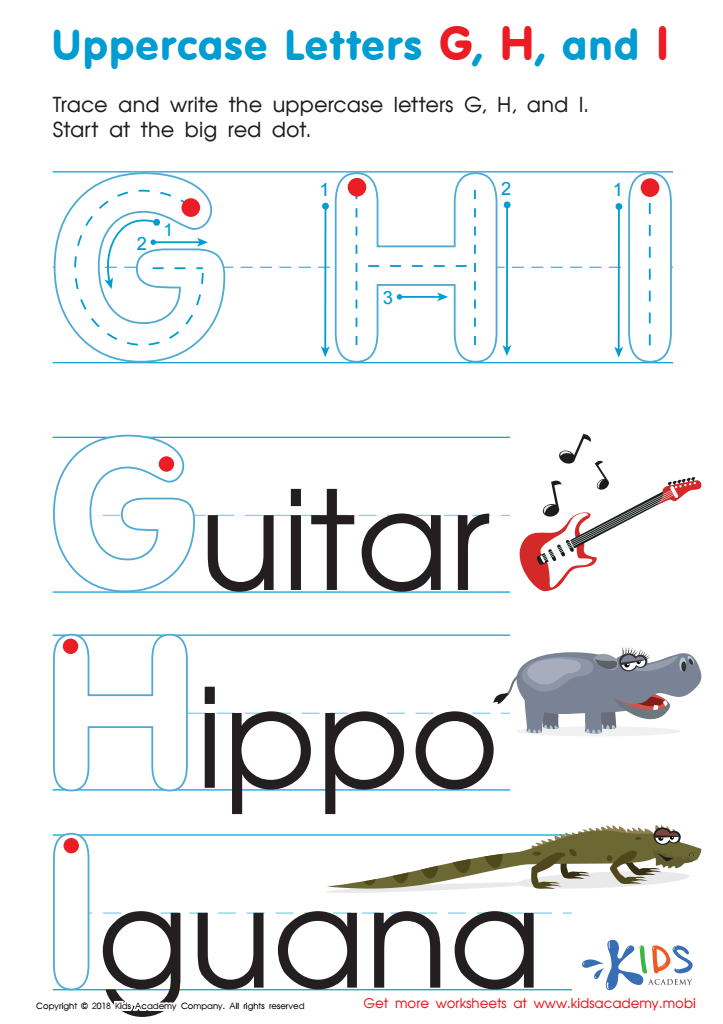Letter formation Normal Tracing Letters Worksheets for 5-Year-Olds
3 filtered results
-
From - To
Our "Letter Formation Normal Tracing Letters Worksheets for 5-Year-Olds" provide young learners with the perfect tools to master essential handwriting skills. These engaging and educational worksheets guide children in tracing uppercase and lowercase letters, reinforcing proper stroke order and encouraging muscle memory. Ideal for classroom and home use, each sheet is designed to build confidence and precision in early writers. The stimulating activities also enhance letter recognition and phonics awareness, laying a solid foundation for reading and writing success. Give your child a head start on literacy with these fun and effective tracing worksheets.


Letter P Tracing Page


Uppercase Letters G, H, and I Worksheet


Letter G Tracing Page
Letter formation and tracing are crucial skills for 5-year-olds as they serve as building blocks for more extensive writing and reading development. From a parent's or teacher's perspective, focusing on proper letter formation from an early age offers several benefits.
Firstly, learning to form letters correctly helps children develop fine motor skills and hand-eye coordination, which are essential for various daily tasks, not just writing. Proper muscle memory promoted through tracing also allows for more efficient and legible handwriting as the child progresses in their academic journey.
Moreover, being able to write letters effectively aids in literacy. When children can efficiently write letters, it can reinforce their understanding of the letter-sound relationships, making it easier for them to decode words when reading. Tracing letters also aids in solidifying the alphabetic principle, the understanding that letters and combinations of letters represent speech sounds.
Spiritually and cognitively, mastering such foundational skills at an early stage can boost a child’s confidence and eagerness to tackle more complex tasks. This is because children often feel a sense of achievement when they can write letters legibly, positively impacting their self-esteem and academic experience.
To summarize, investing the time in teaching 5-year-olds the correct way to trace and form letters lays a solid foundation for their future academic skills, muscular development, and self-belief.
 Assign to My Students
Assign to My Students




















